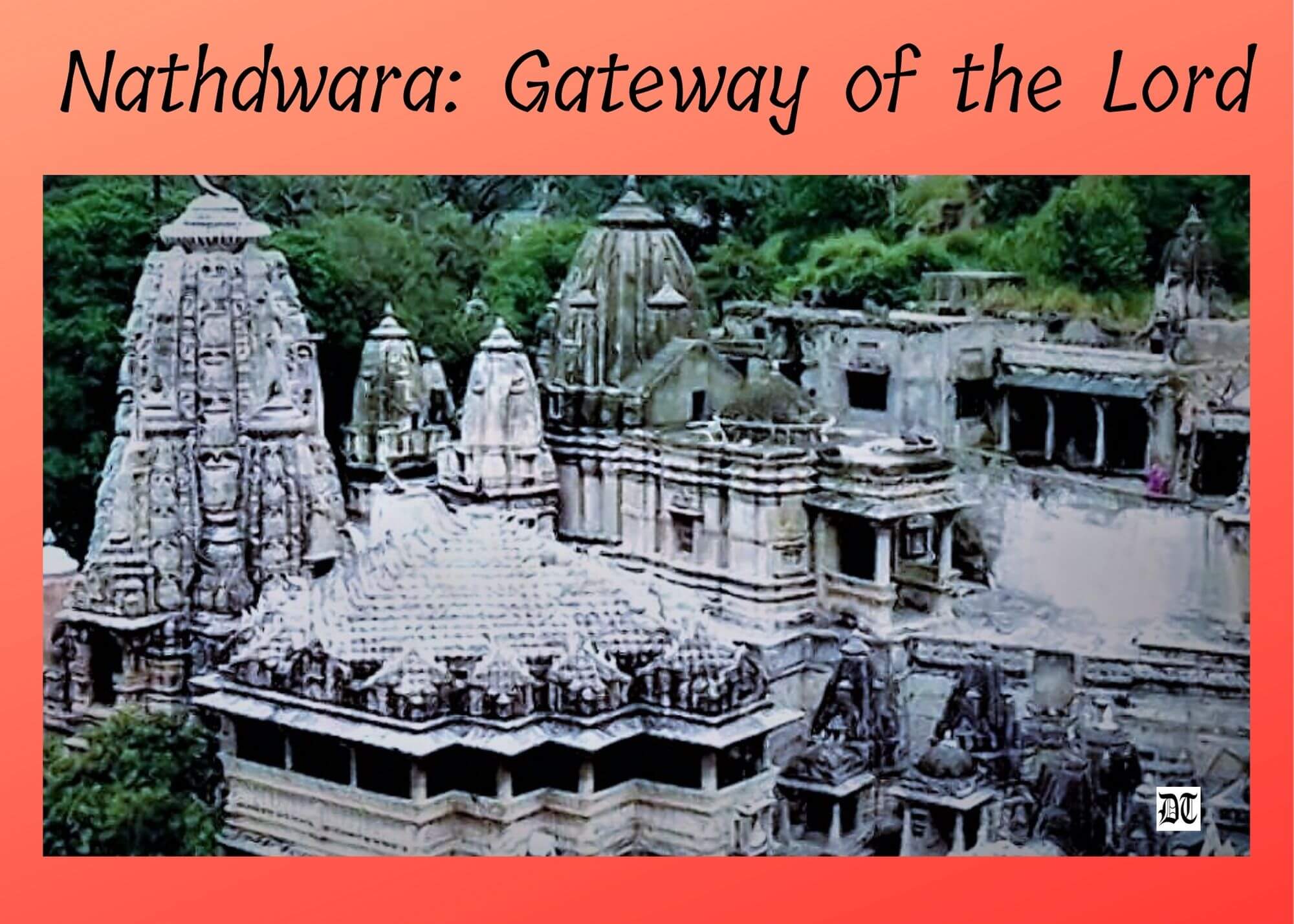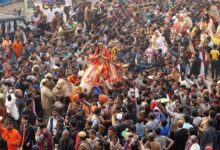Ruchira takes us on a tour of Nathdwara, near Udaipur, and tells us about Shrinathji, an avatar of Lord Krishna. An exclusive for Different Truths.

While we were traveling in Udaipur someone told us to pay a visit to the famous Vaishnava shrine, located at Nathdwara, not too far away from where we were. So, my parents decided to make a dash for it. Shrinathji is an avatar of Lord Krishna, who, it is believed, had lifted the Govardhan hill, with one finger to save the local inhabitants of Gokul from a deluge, resulting from a heavy downpour. There are numerous legends, parables, history, and mythology associated with this deity.
At a village Sihad (aka Sinhad), the wheels of the deity’s carriage got stuck in the mud and refused to budge. To the priests, it was a divine indication that the Lord had chosen this spot…
Eons ago, the image was first worshipped at Govardhan hill, near Mathura in Uttar Pradesh. In the 17th century, it was shifted from Mathura to Agra and kept in secret custody, away from the prying eyes of the Mughal emperor Aurangzeb, who desired to possess it. Later, it was transported to the interiors of Rajasthan. At a village Sihad (aka Sinhad), the wheels of the deity’s carriage got stuck in the mud and refused to budge. To the priests, it was a divine indication that the Lord had chosen this spot and accordingly, a temple was built there. The shrine is known as Shrinathji ki Haveli since it is part of a sprawling mansion/haveli. Till date, the daily elaborate ritual worship continues to be performed by male descendants of Vallabhacharya, a renowned medieval Vaishnava saint, who was strongly associated with Lord Shrinath. Even otherwise, the shrine is a veritable Mecca for the Goswami (Krishna devotees) sect of Hindus.
To come back to my travelogue, the place is now well connected through rail, road, and air services. It was not so almost three decades ago when we went there. I recall how we took an overnight train from Udaipur, alighted at Mavli junction the following morning; from there we boarded an express train which took us directly to the temple town.
The temple by itself is rather nondescript in terms of architecture, aesthetics, et al. There are similar temples pertaining to that era, all over the state.

By the time we reached there, we were tired and hungry. Nevertheless, we headed straight to the temple to catch a glimpse of the deity. The temple by itself is rather nondescript in terms of architecture, aesthetics, et al. There are similar temples pertaining to that era, all over the state. Also, we were rather flabbergasted to see milling crowds everywhere. Even locals flock to the temple almost every day, we were told. Such is the power of faith and devotion!
With a great deal of effort, interspersed with jostling and elbowing by fellow tourists and visitors we got a close enough view of the god. The resplendent image of the deity is carved in bas-relief out of a monolithic block of black marble. It is adorned with images of two cows, a lion, a snake, a pair of peacocks, and a parrot engraved on it. Amidst this the dark lord stands serene and tranquil, his left hand raised upwards while the right hand languidly rests on the left hip. An iridescent diamond is pinned beneath the lips. But the aura of the divine countenance as well the expression of the eyes is mesmerising. I am sure many of you have viewed it umpteen numbers of times; however, having a personal darshan of the divine character is a privilege and a life-changing experience.
Eye-catching and impressive these paintings rendered on cloth depict tales from Lord Krishna’s life.
For those of you who wish to perpetuate this memorable religious journey, there is an easy way out. You must make it a point to procure one or more Pichhwai paintings so characteristic of this place. The word Pichhwai comes from ‘pichh’ meaning back, and ‘wai’, which denotes textile hanging. Originally, the paintings were used to decorate the temple of Shrinathji and hung behind the deity’s image on special occasions, festivals, and so on. Eye-catching and impressive these paintings rendered on cloth depict tales from Lord Krishna’s life. The commonest motifs include infant Krishna, Radha, Gopis, Raas Leela, Holi, Deepawali among many more. Besides serving as a memento, the panting/s will add a touch of class and beauty to your living room!
Visuals by Different Truths






 By
By
 By
By
